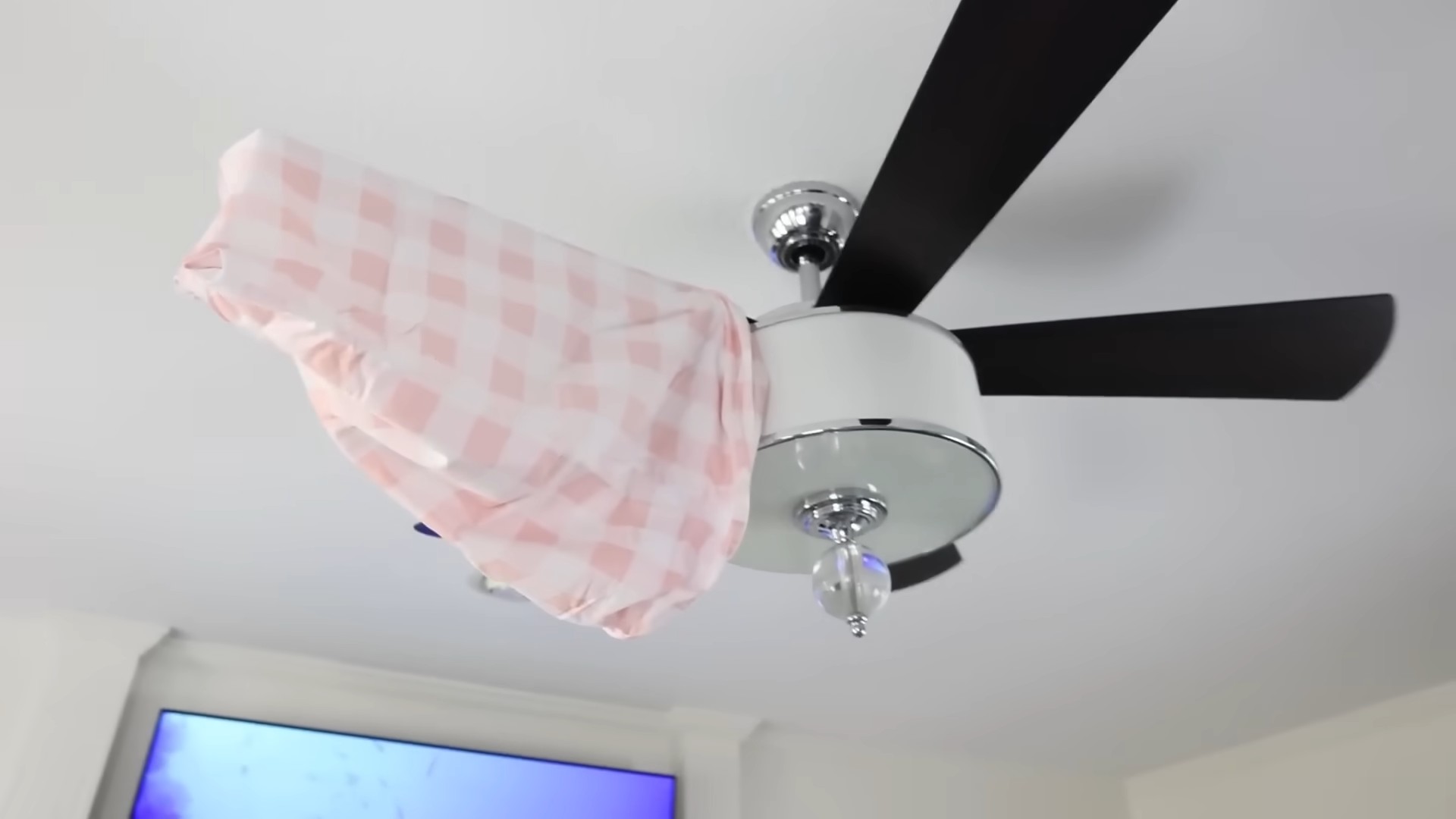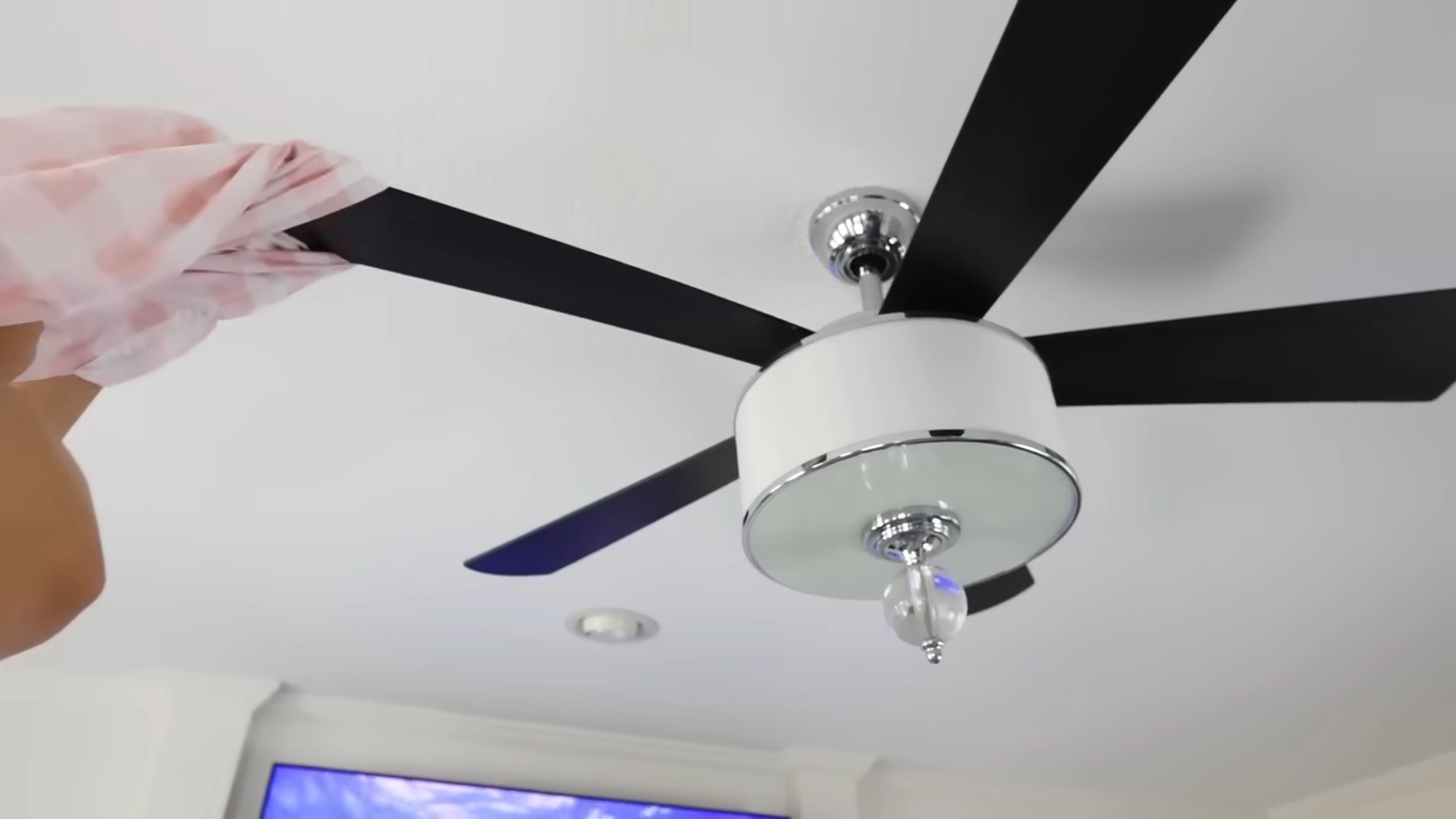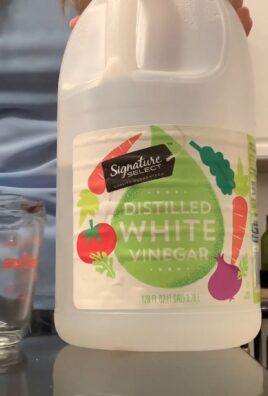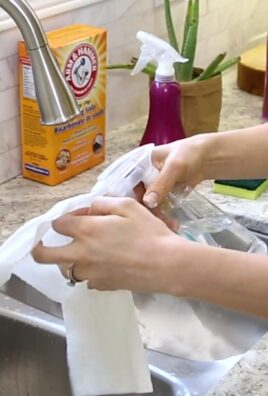Pillowcase Cleaning Tips: Are you tired of waking up with breakouts or noticing your pillowcases looking dingy despite regular washing? I know I was! You might be surprised to learn that your pillowcase, that cozy haven for your head each night, can harbor a surprising amount of dirt, oil, and even bacteria. Think about it – makeup residue, dead skin cells, and even drool can accumulate, creating a breeding ground for unwanted guests.
Historically, keeping linens clean has been a sign of good hygiene and even social status. While we’ve come a long way from washing clothes in rivers, the principle remains the same: clean linens contribute to better health and well-being. And let’s be honest, who doesn’t love the feeling of slipping into a bed with freshly laundered sheets?
That’s why I’ve put together this guide packed with easy and effective pillowcase cleaning tips and DIY hacks. We’ll explore everything from choosing the right detergent to tackling stubborn stains, ensuring your pillowcases are not only clean but also contribute to healthier skin and a more restful sleep. Trust me, a few simple changes to your laundry routine can make a world of difference! So, let’s dive in and discover the secrets to perfectly clean pillowcases!

DIY Pillowcase Transformation: From Stained to Stunning!
Okay, let’s face it. We all love a good night’s sleep, but our pillowcases? They often bear the brunt of our nightly routines. Makeup, oils, drool (yes, I said it!), and general grime can leave them looking less than fresh. But don’t despair! Before you toss those seemingly hopeless pillowcases, I’m going to walk you through a DIY transformation that will breathe new life into them. This isn’t just about cleaning; it’s about restoring and revitalizing your pillowcases to their former glory.
Understanding the Enemy: Common Pillowcase Stains
Before we dive into the cleaning process, it’s important to understand what we’re up against. Different stains require different approaches. Here’s a quick rundown:
* Makeup Stains: Foundation, lipstick, and mascara are oil-based and require a solvent to break them down.
* Oil and Sweat: Our bodies naturally produce oils and sweat, which can accumulate on pillowcases, leading to discoloration and a greasy feel.
* Drool: Okay, maybe not the most glamorous topic, but drool can leave behind a yellowish stain and a slightly stiff texture.
* Hair Products: Hair gels, sprays, and oils can transfer to pillowcases, leaving behind residue and potential stains.
* General Grime: Dust, dirt, and other environmental pollutants can settle on pillowcases, contributing to a dull and dingy appearance.
The Ultimate Pillowcase Cleaning Guide: Step-by-Step
This guide is designed to be comprehensive, covering everything from pre-treatment to the final rinse. I’ve included tips and tricks that I’ve learned over the years to ensure your pillowcases come out looking their best.
Phase 1: Pre-Treatment – The Key to Success
Pre-treating stains is crucial for achieving optimal results. Don’t skip this step!
1. Identify the Stains: Take a close look at your pillowcases and identify the types of stains you’re dealing with. This will help you choose the right pre-treatment method.
2. Makeup Stain Removal (Oil-Based): For makeup stains, I swear by micellar water. It’s gentle yet effective at breaking down oil-based products.
* Dampen a cotton pad with micellar water.
* Gently blot the makeup stain, working from the outside in.
* Repeat until the stain is significantly lighter.
3. Oil and Sweat Stain Removal: Baking soda is your best friend here! It’s a natural absorbent and deodorizer.
* Make a paste of baking soda and water (about 2 tablespoons of baking soda and 1 tablespoon of water).
* Apply the paste to the oily areas of the pillowcase.
* Let it sit for at least 30 minutes, or even overnight for stubborn stains.
4. Drool Stain Removal: A simple solution of white vinegar and water can work wonders.
* Mix equal parts white vinegar and water in a spray bottle.
* Spray the solution onto the drool stain.
* Let it sit for 15-20 minutes.
5. General Grime Removal: A good soak in a mild detergent solution can help loosen dirt and grime.
* Fill a basin or sink with lukewarm water.
* Add a small amount of mild laundry detergent (about 1 tablespoon).
* Submerge the pillowcases in the water and let them soak for at least 30 minutes.
Phase 2: Washing – The Main Event
Now that we’ve pre-treated the stains, it’s time to wash the pillowcases.
1. Check the Care Label: Before you throw your pillowcases in the washing machine, always check the care label for specific washing instructions. This is especially important for delicate fabrics like silk or linen.
2. Choose the Right Detergent: I recommend using a gentle, hypoallergenic laundry detergent to avoid irritating your skin. Avoid detergents with harsh chemicals or dyes.
3. Select the Appropriate Water Temperature: Hot water is generally more effective at removing stains and killing bacteria, but it can also damage certain fabrics. For most cotton pillowcases, warm water is a good compromise. For delicate fabrics, use cold water.
4. Load the Washing Machine: Place the pillowcases in the washing machine, making sure not to overload it. Overloading can prevent the pillowcases from getting properly cleaned.
5. Add a Boost (Optional): For extra stain-fighting power, you can add a cup of white vinegar or baking soda to the wash. Vinegar acts as a natural fabric softener and deodorizer, while baking soda helps to brighten whites and remove odors.
6. Run the Wash Cycle: Select a gentle or delicate cycle to minimize wear and tear on your pillowcases.
7. Extra Rinse (Highly Recommended): I always recommend adding an extra rinse cycle to ensure that all traces of detergent are removed. This is especially important if you have sensitive skin.
Phase 3: Drying – The Final Touch
Proper drying is just as important as washing when it comes to maintaining the quality of your pillowcases.
1. Check for Stains: Before you put your pillowcases in the dryer, inspect them carefully for any remaining stains. If you see any, repeat the pre-treatment and washing process.
2. Choose the Right Drying Method: There are two main options for drying pillowcases: machine drying and air drying.
* Machine Drying: If you choose to machine dry your pillowcases, use a low heat setting to prevent shrinkage and damage to the fabric. Avoid using dryer sheets, as they can leave behind a waxy residue.
* Air Drying: Air drying is the gentlest option for pillowcases. Hang them on a clothesline or lay them flat on a clean surface to dry. Avoid drying them in direct sunlight, as this can cause fading.
3. Ironing (Optional): If you want your pillowcases to look extra crisp and polished, you can iron them while they’re still slightly damp. Use a low heat setting and avoid ironing delicate fabrics like silk.
Dealing with Specific Pillowcase Types
Not all pillowcases are created equal! Here’s how to adjust the cleaning process for different materials:
* Cotton Pillowcases: These are the most common and easiest to care for. Follow the general cleaning guide above.
* Silk Pillowcases: Silk is a delicate fabric that requires special care. Hand wash in cold water with a mild detergent specifically designed for silk. Avoid using bleach or fabric softener. Air dry only.
* Linen Pillowcases: Linen is a durable fabric, but it can wrinkle easily. Wash in warm water with a mild detergent. Tumble dry on low heat or air dry. Iron while slightly damp.
* Satin Pillowcases: Satin is similar to silk and requires gentle care. Hand wash in cold water with a mild detergent. Avoid using bleach or fabric softener. Air dry only.
* Polyester Pillowcases: Polyester is a synthetic fabric that is easy to care for. Wash in warm water with a mild detergent. Tumble dry on low heat.
Preventative Measures: Keeping Your Pillowcases Fresh Longer
The best way to keep your pillowcases looking their best is to prevent stains from occurring in the first place. Here are a few tips:
* Wash Your Face Before Bed: This is the most important thing you can do to prevent makeup and oil from transferring to your pillowcases.
* Use a Clean Towel to Dry Your Hair: Avoid going to bed with wet hair, as this can transfer moisture and oils to your pillowcases.
* Change Your Pillowcases Regularly: I recommend changing your pillowcases at least once a week, or even more often if you have oily skin or acne.
* Consider Using a Pillow Protector: A pillow protector can act as a barrier between your pillow and your pillowcase, preventing stains and extending the life of your pillow.
* Avoid Eating in Bed: Crumbs and spills can easily stain your pillowcases.
Troubleshooting Common Pillowcase Cleaning Problems
Even with the best cleaning methods, you may encounter some challenges. Here are some solutions to common problems:
* Yellowing: Yellowing can be caused by sweat, oil, and detergent buildup. Try soaking your pillowcases in a solution of warm water and oxygen bleach (like OxiClean) before washing.
* Lingering Odors: Lingering odors can be caused by bacteria or mildew. Try adding a cup of white vinegar to the wash cycle.
* Stubborn Stains: For stubborn stains, try using a stain remover specifically designed for the type of stain you’re dealing with. Follow the instructions on the product label.
* Fading: Fading can be caused by direct sunlight or harsh detergents. Avoid drying your pillowcases in direct sunlight and use a gentle detergent.
My Secret Weapon: The Power of Sunlight
Okay,

Conclusion
So, there you have it! Ditching harsh chemicals and embracing this simple, yet incredibly effective, DIY pillowcase cleaning trick is a game-changer for your skin, your sleep, and your wallet. We’ve walked you through the steps, highlighting the benefits of using gentler, more natural ingredients to keep your pillowcases fresh and clean.
Why is this a must-try? Because conventional laundry detergents, while effective at removing dirt, often leave behind residues that can irritate sensitive skin, exacerbate acne, and even disrupt your sleep. This DIY method, on the other hand, utilizes the power of natural ingredients like vinegar and baking soda to gently lift away dirt, oil, and bacteria without leaving behind any harsh chemicals. Think of it as a spa treatment for your pillowcases, ensuring they’re not only clean but also incredibly soft and comfortable.
Beyond the basic recipe, there’s plenty of room for customization. For an extra boost of freshness, consider adding a few drops of your favorite essential oil to the wash. Lavender is a classic choice for its calming properties, while tea tree oil can help combat bacteria and keep breakouts at bay. You could also experiment with different types of vinegar, such as apple cider vinegar, which is known for its skin-friendly properties. If you have particularly stubborn stains, pre-soaking your pillowcases in a solution of baking soda and water can work wonders. For those with extra sensitive skin, consider using a hypoallergenic laundry detergent in conjunction with the DIY solution for an even gentler clean. Remember to always test a small, inconspicuous area of your pillowcase first to ensure the ingredients don’t cause any discoloration or damage.
The beauty of this DIY pillowcase cleaning trick lies in its simplicity and versatility. It’s a sustainable, cost-effective, and skin-friendly alternative to conventional laundry methods. By making this small change, you can significantly improve the health and appearance of your skin, promote better sleep, and reduce your exposure to harmful chemicals.
We wholeheartedly encourage you to give this DIY method a try. You’ll be amazed at the difference it makes! And most importantly, we want to hear about your experience. Share your results, your variations, and any tips you discover along the way in the comments below. Let’s build a community of pillowcase cleaning enthusiasts and unlock the secrets to healthier skin and better sleep, one clean pillowcase at a time. Don’t forget to share this article with your friends and family who might benefit from this simple yet powerful trick. Let’s spread the word about the benefits of natural cleaning and help everyone achieve their best skin and sleep!
Frequently Asked Questions (FAQ)
Why should I clean my pillowcases more often?
Pillowcases accumulate a surprising amount of dirt, oil, dead skin cells, and even bacteria overnight. These build-ups can clog pores, leading to acne breakouts, skin irritation, and even allergic reactions. Regularly cleaning your pillowcases helps to remove these impurities, creating a cleaner and healthier sleep environment for your skin. Think of it this way: you wouldn’t sleep in the same clothes for weeks without washing them, so why would you do the same with your pillowcase? Frequent cleaning is a simple yet effective way to maintain healthy skin and prevent breakouts.
How often should I wash my pillowcases?
Ideally, you should wash your pillowcases every two to three days, especially if you have oily or acne-prone skin. If you don’t have time for a full wash that frequently, consider flipping your pillow over each night to use a fresh side. This will help to minimize the amount of dirt and oil that accumulates on your skin. For those with sensitive skin or allergies, washing your pillowcases daily might be beneficial. Ultimately, the frequency depends on your individual needs and skin type.
What ingredients do I need for this DIY pillowcase cleaning trick?
The basic recipe typically involves white vinegar, baking soda, and water. Some variations may include essential oils for added fragrance and antibacterial properties. You might also want to have a mild, hypoallergenic laundry detergent on hand for particularly dirty pillowcases or for those with sensitive skin. The beauty of this DIY method is that it uses readily available and affordable ingredients that you likely already have in your pantry.
Can I use this DIY method on all types of pillowcases?
This DIY cleaning method is generally safe for most types of pillowcases, including cotton, linen, and synthetic fabrics. However, it’s always a good idea to check the care label on your pillowcase before proceeding. For delicate fabrics like silk or satin, you may need to adjust the recipe or use a gentler cleaning method. For example, you might want to reduce the amount of vinegar or baking soda used, or opt for a hand-washing approach instead of using a washing machine. Always test a small, inconspicuous area of the fabric first to ensure that the ingredients don’t cause any discoloration or damage.
Will vinegar and baking soda damage my washing machine?
No, vinegar and baking soda are generally safe to use in washing machines. In fact, they can even help to clean and deodorize your machine. However, it’s important to use them in the correct proportions and avoid mixing them directly in a concentrated form, as this can create a chemical reaction that could potentially damage your machine. Always dilute the vinegar and baking soda with water before adding them to your washing machine. Also, avoid using vinegar and baking soda in conjunction with bleach, as this can create harmful fumes.
What if I don’t have vinegar or baking soda? Are there any alternatives?
If you don’t have vinegar or baking soda on hand, you can try using a mild, hypoallergenic laundry detergent specifically designed for sensitive skin. Look for detergents that are free of dyes, fragrances, and harsh chemicals. You can also try using a natural laundry soap made from plant-based ingredients. While these alternatives may not be as effective as vinegar and baking soda at removing stubborn stains and odors, they can still help to keep your pillowcases clean and fresh.
How do I get rid of stubborn stains on my pillowcases?
For stubborn stains, pre-soaking your pillowcases in a solution of baking soda and water can work wonders. Mix a few tablespoons of baking soda with warm water and soak your pillowcases for at least 30 minutes, or even overnight for particularly tough stains. You can also try using a stain remover specifically designed for the type of stain you’re dealing with. Always test the stain remover on a small, inconspicuous area of the fabric first to ensure that it doesn’t cause any discoloration or damage.
Can I use essential oils in this DIY cleaning method?
Yes, you can definitely add essential oils to this DIY cleaning method for an extra boost of freshness and antibacterial properties. Lavender, tea tree, eucalyptus, and lemon essential oils are all great choices. However, it’s important to use essential oils sparingly, as they can be quite potent. A few drops are usually sufficient. Also, be sure to use high-quality, pure essential oils to avoid any potential skin irritation. If you have sensitive skin, it’s always a good idea to test the essential oil on a small area of your skin before using it in your laundry.
How do I dry my pillowcases after washing them?
You can dry your pillowcases in a dryer on a low heat setting, or you can hang them to dry. Hanging your pillowcases to dry is a more gentle option that can help to prevent wrinkles and prolong the life of the fabric. If you choose to use a dryer, be sure to remove your pillowcases promptly once they’re dry to avoid wrinkles. You can also add a dryer sheet to help soften the fabric and reduce static cling.
My pillowcases still smell after washing them. What should I do?
If your pillowcases still smell after washing them, it could be due to a buildup of detergent or fabric softener. Try re-washing your pillowcases with a smaller amount of detergent, or even just with water. You can also add a cup of white vinegar to the rinse cycle to help remove any lingering odors. Make sure your washing machine is clean and free of any mold or mildew, as this can also contribute to unpleasant odors. Finally, ensure that your pillowcases are completely dry before storing them, as damp fabric can quickly develop a musty smell.



Leave a Comment